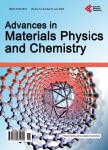<i>In Silico</i>Experiments of Carbon Dioxide Atmosphere and Buffer Type Effects on the Biomimetic Coating with Simulated Body Fluids
<i>In Silico</i>Experiments of Carbon Dioxide Atmosphere and Buffer Type Effects on the Biomimetic Coating with Simulated Body Fluids作者机构:Federal University of Rio de Janeiro Rio de Janeiro Brazil State University of Rio de Janeiro Nova Friburgo Brazil
出 版 物:《Advances in Materials Physics and Chemistry》 (材料物理与化学进展(英文))
年 卷 期:2012年第2卷第4期
页 面:239-248页
主 题:Hydroxyapatite Thermodynamic Modelling Carbon Dioxide HEPES and TRIS Buffers In Silico Experiments
摘 要:The formation of calcium phosphate phases is extremely important in a biomedical engineering context. These phosphates are used in many applications, such as grafts, drug-delivery processes and evaluation of the bioactivity of metallic surfaces. Considering this scenario, it is useful to evaluate the thermodynamic conditions for the precipitation of phosphates of biomedical interest, mainly hydroxyapatite. In this work, we investigate the effects of two important factors using a thermodynamic framework: 1) carbon dioxide partial pressure;and 2) buffer type (2-Amino-2-hydroxy- methyl-propane-1,3-diol, known as TRIS and 2-[4-(2-hydroxyethyl)piperazin-1-yl] ethanesulfonic acid, also called HEPES), on the driving force behind the precipitation of calcium phosphates in simulated body fluids. The in silico results show that the pH value is governed by carbon dioxide content, as expected to occur in vivo. Moreover, the buffers can deplete the free calcium available in solution and, consequently, can cause difficulties in the calcium phosphate precipitation.



